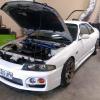Doing a +t conversion on an unopened RB25DE NEO (R34 GT)
Announcements
-
Similar Content
-
Latest Posts
-
So, we now have a straight and clean boot lid inbound and the car goes in for paint, again, on Wednesday, and will be ready on Friday, all ready to get cams and stuff on Monday And by straight and clean.....I mean a brand new OEM one that cost..... $1300....😪 Sadly there's no clean undamaged used soft top version available, plenty for the power retractable hard top versions though, which is arse and makes Mark have the sads I could have waited longer, until a NC sort top boot lid eventually turned up, but I'm sick of waiting and said fark it and made it rain cash, meh In other naturally aspirated news, one of the guys at work brought in his old Corola which had a 4AGE in it, really nice clean car with lots of mods, including ITB's, man that things induction noise sounds sick with all of the dorts that makes you smile......maybe the NC needs ITB's, yeah, basically for the noise they make, but they're pretty expensive, but, they sound so damn good I may bring this up when I drop the car up on Monday, and by may, I mean I will🤣🤑🤪🤣






Recommended Posts
Create an account or sign in to comment
You need to be a member in order to leave a comment
Create an account
Sign up for a new account in our community. It's easy!
Register a new accountSign in
Already have an account? Sign in here.
Sign In Now